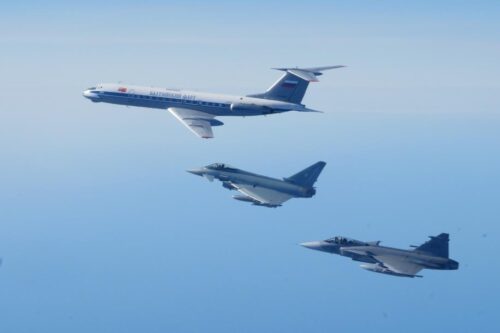Swedish fighter jets marked a significant moment in their integration with NATO on Mar. 11. Following Sweden’s official accession to the alliance on Mar. 7, Swedish Air Force Gripen multirole fighters participated in their first visual identification (VID) mission as part of the NATO Air Policing mission over the Baltic Sea region.

Photo: NATO
This mission involved Swedish Gripens flying alongside German and Belgian fighter jets. Demonstrating their operational readiness, the Swedish jets were scrambled twice on March 11th to identify and intercept approaching Russian military aircraft.
The Swedish Gripens, operating alongside Belgian F-16 fighter jets, launched from Šiauliai Air Base, Lithuania, for their first NATO Air Policing mission. Their initial task involved visually identifying a Russian Tu-134 military aircraft approaching the Baltic Sea region.
Later in the day, NATO radar systems detected another unidentified track. German Eurofighters and Swedish Gripens were then launched from their respective airbases. This joint force successfully conducted a visual identification of a Russian An-26 turboprop transport aircraft, likely the source of the unidentified track. Following the identification, the Swedish and German fighter jets conducted an escort of the An-26.
This mission wasn’t over yet. The Swedish and German forces were subsequently tasked with another identification procedure, this time involving a separate Russian Tu-134 aircraft. This sequence of events demonstrates the dynamic nature of NATO Air Policing operations and the swift response required from member nations.
While Sweden has previously collaborated with NATO on air policing missions, this represents their first official deployment under the NATO banner as a full member. This active engagement signifies Sweden’s commitment to fulfilling its obligations within the alliance and strengthens the collective defense posture in the Baltic region.
The seamless cooperation between Swedish, German, and Belgian aircrews during this mission exemplifies the collaborative approach to air defense that NATO fosters.
For more information, hit the Source below